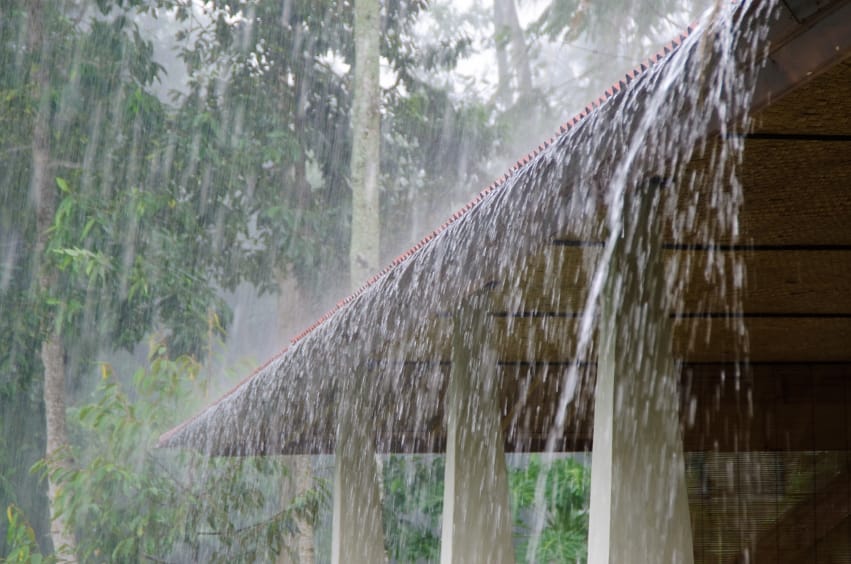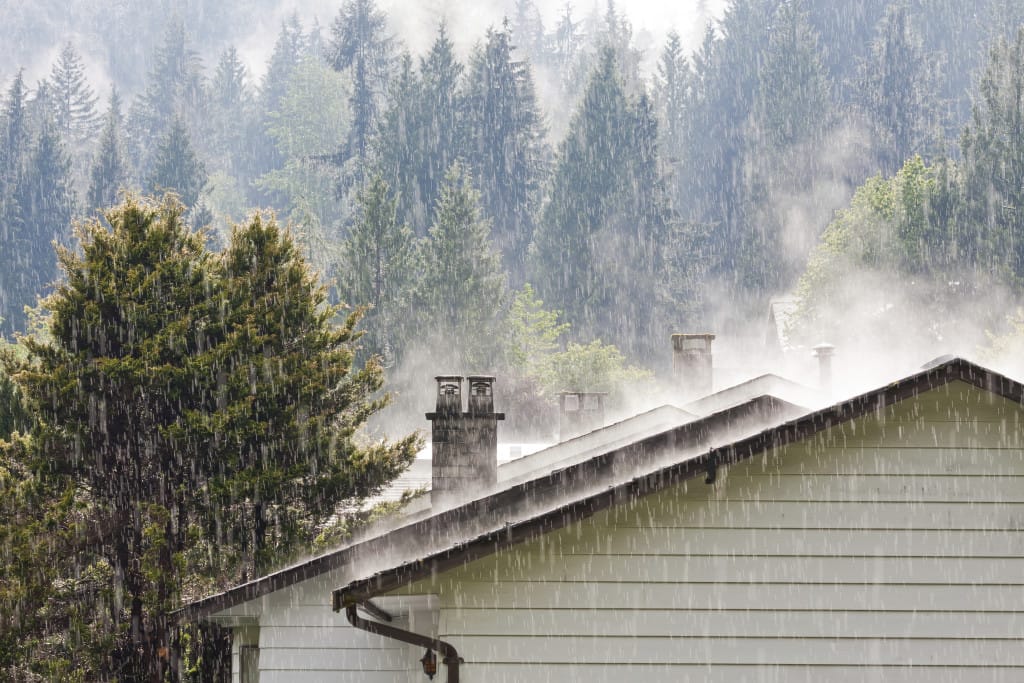How to Check Your Roof After a Heavy Rainfall
If you’re like most homeowners, you don’t pay much attention to your roof. It’s probably taken for granted more than any area of your house. However, it shouldn’t be. After all, it protects you and your family from the sun; it helps to keep you warm; and when a high wind kicks up, nobody inside feels it. It’s actually very important to consistently check your roof, especially after bad weather.
But arguably the most important function it performs is keeping everything inside your house, including its occupants, dry. When it fails to do that, you’ll start paying attention.
It makes sense to check your roof occasionally, and there’s no better time to do that than after a heavy rainfall. Here’s the story:
Heavy Rains can Expose a Faulty Roof
Heavy rains are a cause for concern, even if your roof is relatively new and has been maintained. The fault doesn’t always rest with the roofing material. There could be issues of workmanship where the roof meets other structures like a chimney or skylight.
Of course, if you have an aging roof, heavy rainfall, especially one accompanied by high winds, will expose its flaws. That’s why experts recommend that you check your roof after any downpour, rather than waiting until you notice a trickle of water running down one of your interior walls.
Start looking at the top and work your way down. Then go inside where most of the inspection will take place.
First Off, Grab Your Ladder
Yes, you will need to grab your ladder and check your roof. An old roof will eventually turn into a leaky one, so look for signs of old age. If you see cracked, curled, or missing shingles, take it as a warning sign. Also, asphalt shingles have layers of granules covering them. If you see “bald” shingles, that’s another red flag.
If the shingles look intact, inspect other areas of the roof that are most likely to spring a leak. These parts include:
- Skylights
- Chimney
- Ridge vent
- Plumbing and furnace vents
- Seams
- Antennas and satellite dishes
Check the Visible Areas Inside the House
Check your bathrooms first. Vent pipes that are attached to the exhaust fans extend through the roof. You can often trace leaks to the vent pipe collars around the pipe. Made of a metal base and a rubber boot, the boot can deteriorate and allow water to seep in.
Look at the walls where they meet the ceiling. Stains there indicate a leak that most likely is caused by an issue with the gutters. Sometimes just cleaning out the gutters will remedy the problem. Other times the problem is a missing drip edge that is allowing rainwater to seep behind the gutter. If this is the case, call a roofing contractor to install a drip edge, or do it yourself if you’re handy. Either way, don’t ignore it; it can destroy your roof decking, fascia boards, and soffit.
Look at Your Skylights
Skylights are notorious for leaking after a heavy rain. Some homeowners get rid of them because they are tired of dealing with them, but you don’t have to go that far. Most skylights are either damaged or were installed incorrectly. In other cases, condensation from rain and runoff is leaking in.
Sometimes roofers will shortcut a roof replacement, and use the old flashing with a new roof. Sometimes it’s found around skylights and chimneys. Caulking can also age and leave gaps through which water can seep.
If your inspection shows a leaking skylight during or after a heavy rain, place a bucket underneath to catch the leak temporarily, and call an experienced roofing company. This repair is typically not something for a do-it-yourselfer. You’ll want it fixed correctly.
Your Chimney is Vulnerable to Leaks
If your house has a chimney (and most do), you might be facing problems with roof leaks at some point. Here are a few things to check after a substantial rain:
Climb into the attic and look for leaks and stains on the floor near the chimney.
Check downstairs for peeling wallpaper, stains on the walls, and dampness near the hearth.
Look at the mortared area around the top of the chimney. It can become loose or cracked, allowing rainwater into the fireplace.
Check the mortar joints for deterioration and holes.
Although they can be hard to spot, leaks around the chimney flashing can let in a sizable amount of water during a heavy rain. Hire a sheet metal or roofing company to redo the flashing.
Ridge Vents: Friend and Foe
Your attic needs adequate ventilation to maintain the condition of the structural wood and sheathing. Reduced temperatures up there also lead to prolonging the life of the roof covering. So there’s no question that a ridge vent serves a valuable purpose.
There’s also no doubt that if there are problems with these vents, they have the potential to allow significant amounts of water into your home. It’s possible that heavy rains, especially those accompanied by high winds, can cause the vent to come loose. In fact, they can come off altogether in a violent storm, leaving a gaping hole for water to enter. Always check them after any substantial rainfall to ensure that they’re still intact.
Be Extra Vigilant with Flat Roofs
Many flat roofs lack the drainage required to keep up with heavy rains. After a storm, check your roof for cracks, tears, blisters, and wrinkles. Make sure that it’s still properly sealed, and that all eaves and flashings are undamaged.
Flat roofs don’t usually leak like pitched roofs. You may notice a wet spot on the ceiling or larger patches down your walls. If you have a flat roof, it’s a good idea to have it inspected regularly.
Call a Roofing Company for Emergency Roof Repair
If you can make simple repairs to your roof after a heavy rain exposes a leak, you can extend the life of your roof. However in most cases, it’s safer to call a professional roofing company immediately. If you don’t check your roof, you may not know that there are problems. The longer you wait for emergency roof repair, the more water-damage your interior will suffer.


